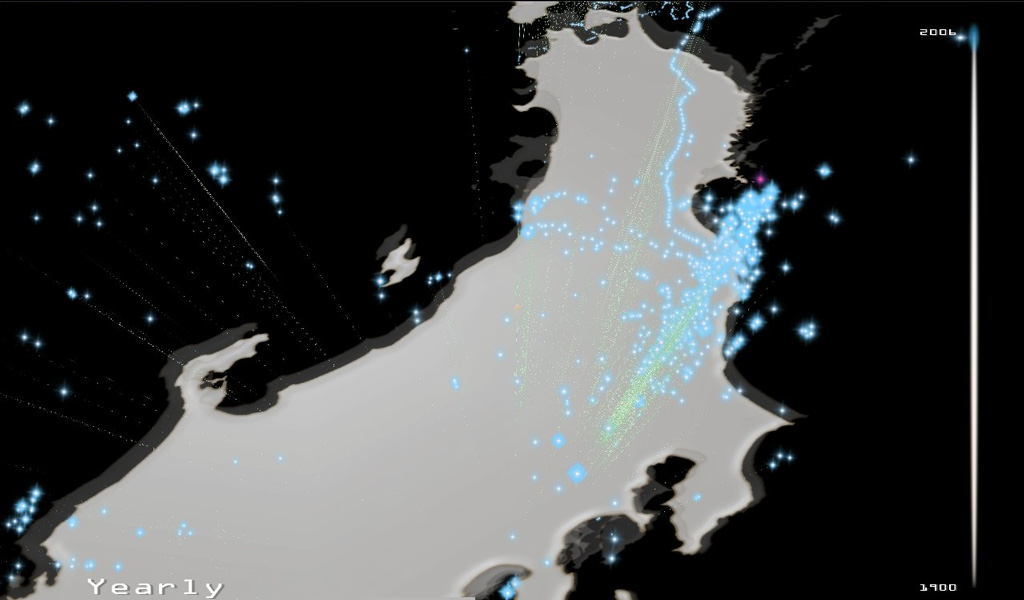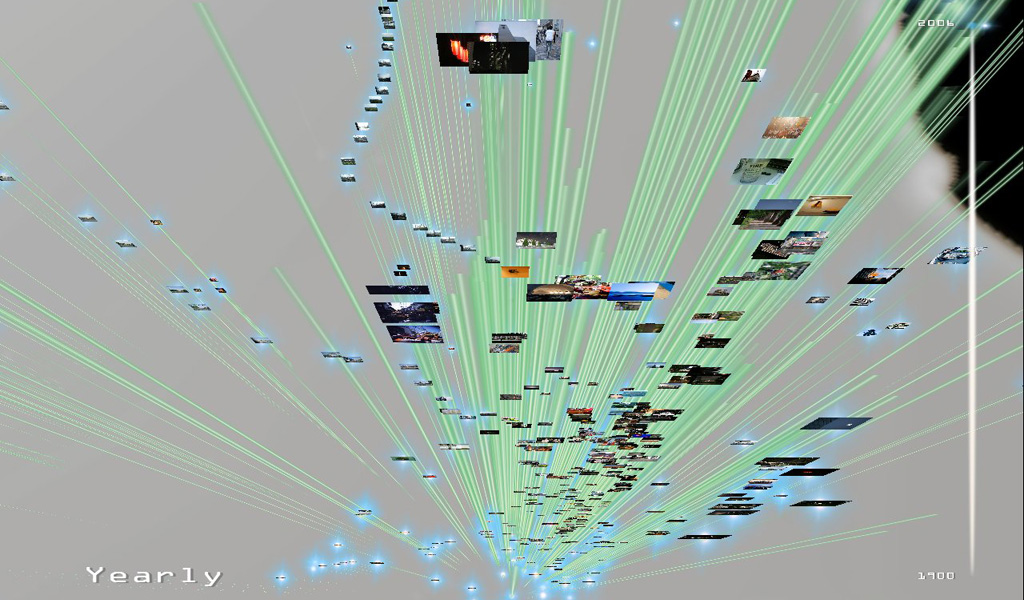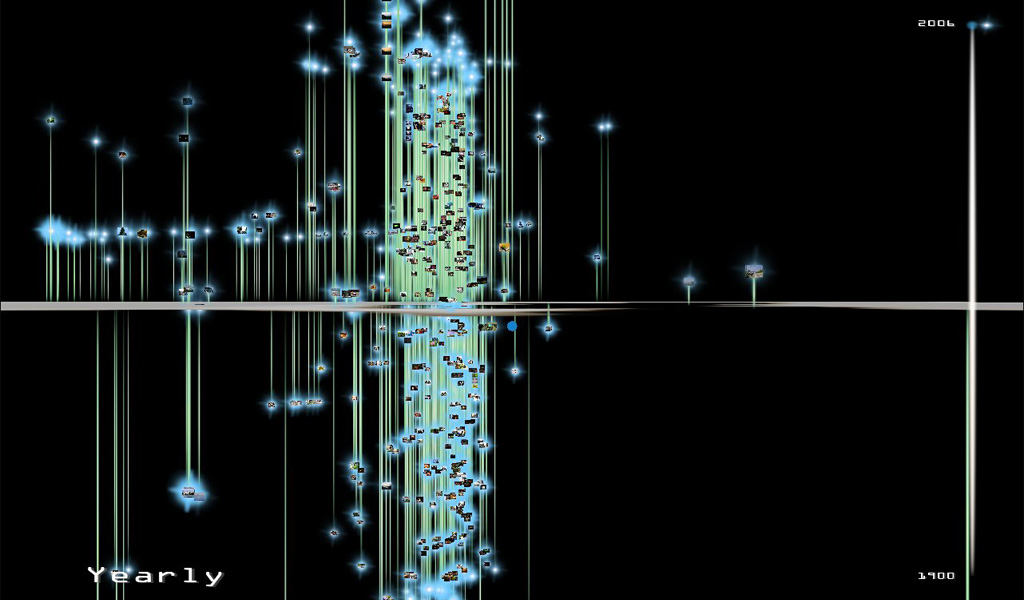 |
|
|
|
Home → Technology → Feature-Lists
|
The Feature-Lists highlight several very interesting and unique feat- ures of our Ontologic System Architecture (OSA) that differentiates it from other systems as the original.
Most of the features are already part of our OSA since its start in the autumn of the year 2006 or were added in the year 2007, while some few more features were added during the following years. The given dates only mark the days when we have collected and sum- marized them.
Bridge from NI to AI
The OSA offers our seamless bridge from Natural Intelligence (NI) to Artificial Intelligence (AI) as the new processing and servicing model for computing devices and in this way is the basis for our operating system platforms respectively ontologic systems and their many fascinating features.
The bidirectional bridge can be sketched in various ways.
The first sketch focuses on semantic World Wide Web technologies to emphasize the history of its development:
- natural intelligence
over - natural languages and linguistics, inclusive conditional clauses,
to - semantic WWW techniques and technologies, specifically the formats of the RDF and the OWL,
and - natural language and image processing, and logics, specifically the formats up to
- evolutionary computing, machine learning,
and - artificial intelligence.
The second sketch describes the bidirectional bridge more precisely by showing its independence in respect to a specific syntax and format respectively its ontologic foundation, and listing the system-immanent reflective or introspective feature:
- natural intelligence
over - natural multimodalities for interaction and communication, specifically the modes involving the five human senses,
to - ontologic techniques and technnologies, specifically the ones that are independent of a predetermined representation,
and - natural multimodal processing or natural sense processing, and logics,
up to - reflective or introspective computing, evolutionary computing, machine learning,
and - artificial intelligence.
See the related sections of the webpage Links to Software and Literature as well.
Feature-List Ontoverse (2nd June 2012)
- reflection, specifically reflective operating system (see The Proposal),
- total model-based approach and not only for the visual part like a 3D/virtual environment (see the Feature-List #3 below and OntoBlender),
- world's first 3D up to nD operating system,
- full Artificial Intelligence (AI) I, II, and III (see Softbionics and Artificial Intelligence III), inclusive General Artificial Intelligence (GAI, see also Friendly Artificial Intelligence),
- Machine Learning (ML),
- Evolutionary Computing (EC), inclusive Evolutionary Algorithms (EA), Genetic Algorithms (GA), and for sure Genetic Programm- ing (GP),
- full-fledged intelligent/cognitive agent-oriented architectures,
- intelligent/cognitive Multimodal Multimedia User Interface (M²UI) and browser for the 3D operating system, 3D internet, and 3D web,
- ontology-based semantic web and ontologic web
- operating system as the infrastructure for the Web 2.5, 3.0, 4.0, 5.0, and so on, as well as the inter- and the ontoverse,
- extension of the Mixed Reality (MR) concept by adding new limits,
- extension with Augmented Reality (AR) and without doubt Mobile Augmented Reality (MAR),
- Caliber, the best possible or perhaps even the Theory of Everything (ToE)/Universal Theory about the observable universe, because it is for example all-embracing, dynamic, and self-optimizing, and moreover goes far beyond of only blurring the line of reality and virtuality, or/and what is called by the term second earth, because it is more a second uni- verse,
- full support of scientific fields, like e.g. physics, biology, epi- stemology, philosophy, arts, informatics, computer science, and so on,
- full support of technologies, like e.g. nanotech, microtech, macrotech, chemtech, biotech, and many more, and engineer- ing in general,
- full support of software concepts and single software techno- logies, like Multimodal Multimedia User Interfaces (M²UIs) that even have a voice-chat interface and a full 3D gaming-plat- form with support by e.g. 3D modeling tools for the creation of for example Massively Multiplayer Online (Role-Playing) Games (MM(OR)PGs) even with Lego minifigures as avatars (read the webpages about the Virtual Object System (VOS) and the Mekesleep Underware) in stark contrast to all virtual web services and online 3D gaming platforms in 2007 that obviously were only illegally made, hyped clones of our actings in the field of the virtual world environment and eventually also in the field of 3D gamining worlds,
- full support of hardware concepts, e.g. ubiquitous computing and Ubiquitous Sensing, and single hardware technologies, like e.g. stereoscopic virtual-reality goggles, wearable computing with Head-Mounted Displays (HMDs), Human Object Interface (HOI), human enhancement and cyborg technologies, inclusive Brain Computer Interface (BCI), and geospatial positioning sy- stems to name some of the best known, but also our intellig- ent tablet computers, Pad Computers, and Ontoscope hard- ware, as well as our younger Retina Projection, MobileKinetic, Wireless Supercomputing (Wiser), Mobile Photonic computing technologies, and many more,
- so much more, and
- integration of all
Feature-List Caliber/Calibre (8th of June 2013)
- Universal location awareness
- Universal self-awareness
Feature-List By Devices (22nd of June 2013)
- Context awareness
- Situation awareness
- Embodied cognition(/intelligence)
- Activity recognition
- Able to understand what a device reads, sees, hears, or/and senses otherwise in a different mode, and can communicate this with the user textually, visually, acoustically/verbally or/and haptically
- A device can communicate input with the user textually, visually, acoustically/verbally, or/and haptically
Feature-List AutoSemantic #1 (13th of March 2008)
- Integrated data architecture with data and sensor fusion
- WirelessLAN-compatible
- WirelessPAN-compatible (e.g. Bluetooth®)
- Able to sense RFID and in this way NFC (e.g. IPRFID/IPNFC and SecureRFID/NFC)
- Swarm-functionality
Feature-List AutoSemantic #2 (15th of May 2008)
- Solves the problem of too error-prone hands-free alternatives like speech recognition or cameras that recognise speech or gestures
Feature-List #1 (22nd of April 2008)
- 'MinCore' not bigger than 25 MByte, a memory footprint of 40 MByte, component-/module-based, and with consolidated dependencies (see OntoL4 and OntoL4OntoLinux)
- Virtualization (see Linux on OntoL4 and OntoL4OntoLinux)
- Multiprocessing (see Linux)
- Parallel operating of graphic cards, and other multimedia cards from different manufacturers
- Multimedia processing pipeline (see LARRI, AGENDA, Raven- Claw/Olympus, and an upcoming document)
- Touch-functionality
- Sound enhancement
- Shell enhancement
- 'Full Scripting' of the operating system functions (see e.g. Open Source Poplog™ and OntoBot)
- File system of the next generation with 'Data-Flow', and boolean operators (not, and, or) for filtering while looking for data (see OntoFS)
- Integration of a partition manager
- 'Quick View' of the contents of files
- Full customization of the taskbar with pop-out icons, now called 'Infoboard'
- Wireles network awareness with improved connection tools and detections (see IEEE 802.11s, 802.11k, 802.11r, and 802.11w)
- 'MultiWLAN' and 'Full Wi-Fi'
- Sensor system
- Integration of the Global Positioning System (GPS)
- Backup system enhancement, and recovery system 'Time Engine'
- Health Management System (HMS)
- Thorough integration of Web 1.0 technology and content
- Integration of Web 2.0 content like maps
- Integration of gadgets into the internet browser
- Integration of functions from the web browsers and email, news, and chat clients
- Visual analyzation of the performance and reliability of the High-technology Operating System
- Integration of anti virus software
- User centric migration of applications and data from one computing machine to another, even from a personal computer to a cell phone, or an automotive media center
- User account control enhancement
- Font manager, and XAML-fonts
- Built-in spell checker
- Animation of desktop icons
- Gaming enhancement and video game console integration
- Cluster functionality
Feature-List #2 (24th of April 2008)
- World wide first-of-its-kind operating system, that sets and establishes the new standards Web 3.0, Web 4.0, and Web 5.0 (every user gets an id, that starts with onto#)
- Personal World Wide Web-based infrastructure, network, and virtual drive, that supports the user centric migration 'Max-Mig'™, synchronization 'Max-Sync'™ of applications and data, and communication 'Max-Com'™
- Adaptive processing for reflecting the network quality and device capability
- Proactive user support, that predicts the future by autono- mous agent systems (see OntoBot)
- Multimodal Multimedia User-Interface 'M2UI'™ (see OntoScope, especially the integration of Tulip)
- 'AITouch'™ for intelligent screening devices
- 'IPNav'™ (based on Galileo), 'IPGPS'™ (based on Global Positioning System), IPGLOSS (based on Global Navigation Satellite System), and 'IQNav'™ for mobile devices inside
- Integration of functions from the WebKit
- Advanced manager for devices
- Advanced manager for applications
Feature-List #3 (29.April.2008)
- With OntoLinux a robot is able to recognize itself in reflecting surfaces (e.g. mirror).
Feature-List #4 (15th of May 2008)
- Capable of making highly complex facts about data and relat- ions visible (specifically by the OntoBot and the integration of Tulip).
Feature-List #5 (11th of July 2013)
- Multilingual Multimodal Multiparadigmatic Environment (M³E; see OntoBlender) for
- research,
- design,
- development, and
- problem solving,
- modelling
- process,
- data, and
- 2D and 3D,
- programming,
- analyzing,
- testing,
- verifying and validating,
- visualizing,
- simulating, and
- reasoning,
- control and
- production,
- work,
- information acquisition,
- communication,
- connecting,
- entertainment, and
- game-playing,
- controlling
- Multilingual Multimodal Multiparadigmatic Programming Environment (M³PE) in respect of the
- modalities like
- textual,
- literal,
- visual,
- acoustical,
- sensorial,
- synesthetical,
- and so on,
- paradigms like
- logic,
- functional,
- constrained,
- dataflow,
- flow-based,
- imperative and procedural,
- Object-Oriented (OO 1),
- Ontology-Oriented (OO 2),
- Ontologic-Oriented (OO 3),
- agent-oriented,
- automata-based,
- meta, inclusive reflective,
- event-driven,
- parallel,
- concurrent,
- and so on
- modalities like
- Multilingual Multimodal Multiparadigmatic Data Modelling Environment (M³DME) in respect of the
- modalities
- textual and
- visual,
- paradigms
- relational,
- object-oriented,
- object-relational,
- ontologic,
- and so on
- modalities
- Seamless integration of
- programming paradigms
- dataflow,
- flow-based,
- etc., etc., etc.,
- processing pipeline
- push (forward) and
- pull (backward),
- data model paradigms
- relational,
- Structured Entity-Relationship Model (SERM)
- object-oriented,
- Structured Object-Oriented Model (SOOM)
- object-relational,
- Structured Object-Relationship Model (SORM)
- ontologic,
- and so on
- term rewriting and
- graph rewriting systems/(imperative) graph rewrite rules/graph grammars
- Directed Acyclic Graph (DAG) as basic structure and
- Directed Cyclic Graph (DCG) as special structure
- Structured Relational Petri net-based Object-oriented Model (SRPOM) based on
- Structured Object-Oriented Model (SOOM) with its
- Structured Object-Relationship Model (SORM),
- Structured Object-Role Model (SORoM), and
- Structured Object-Behaviour Model (SOBM),
- Structured Petri net-Entity-Relationship Model (SPERM)
- Structured Object-Oriented Model (SOOM) with its
- programming paradigms
- Multilingual Multimodal Multimedia User Interface (M³UI), inclusive
- Mixed Reality User Interface (MRUI),
- Graphic User Interface (GUI),
- Augmented Reality User Interface (ARUI), and
- Virtual Reality User Interface (VRUI),
- Kinetic User Interface (KUI), inclusive 'MultiKinetic' and
- Haptic User Interface (HUI)
- Mixed Reality User Interface (MRUI),
- Model-based simulation of upgrades to predict failures before affecting the real system
- OntoMedia semantic management service for large multimedia collections
- OntoBeam
- MultiGPS, inclusive Inertial Measurement Unit (IMU)
- OntoGlobe/OntoEarth
- 3D panorama picture and video
- 3D Photo and Video Sphere
- Object-Based Reconfiguration
- Full support for 3D printer, rapid production machines, and direct-digital manufacturing machines
- Internet of Things ready (e.g. IPRFID/IPNFC; see OntoL4 and OntoL4OntoLinux)
- Distributed services, specifically
- wiki computing
- OntoWiki 1.0 and
- OntoWiki 2.0,
- cloud computing
- Castle in the Cloud,
- AutoCloud,
- CarCloud,
- RobotCloud,
- MapCloud,
- AutoMapCloud,
- OntoCloud,
- and so on
- wiki computing
- Wave-field computing
Feature-List #6 (16th of July 2013)
- Log-Structured Hash-based File System (LogHashFS or LHFS)
- Framework of reasoners and provers (see OntoBot) used as well for
- testing,
- retrieval,
- spell checker, and
- spreading activation methods
- (semantic) world wide web, specifically with the
- Resource Description Framework (RDF),
- Web Ontology Language (OWL), and
- further eXtensible Markup Language (XML) vocabularies,
- graphs of all kinds by the integration of Tulip in OntoScope e.g.
- force-based algorithms
- among other functionalities
- Framework for search engines with
- full text search and
- probabilistic information retrieval
- Framework for context-sensitive spell checkers
- Integration of WebGLKit
- Support for WebGL
- Ontologic Design/Modeling Language (ODL/OML),
- Natural Language Processing to Web Ontology Language (NLP2OWL)
- Natural Image Processing to Web Ontology Language (NIP2OWL)
- Map & Globe
- 2D and 3D Image-Based Rendering
- Panoramic View-Based Rendering
- 3D panorama sound
- 3D Sound Sphere
- Votography
- Barcode-Based Reconfiguration (BBR)
- Space-Based Reconfiguration (SBR)
Feature-List #7 (24th of April 2014)
- Time-based, Image-Based Modeling and Rendering (TBIBMR) even in immersive 3D environments besides the common Space-Based IBMR (SBIBMR) technique



